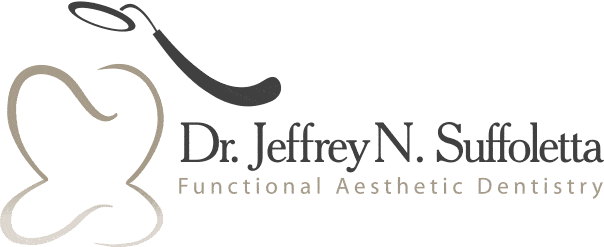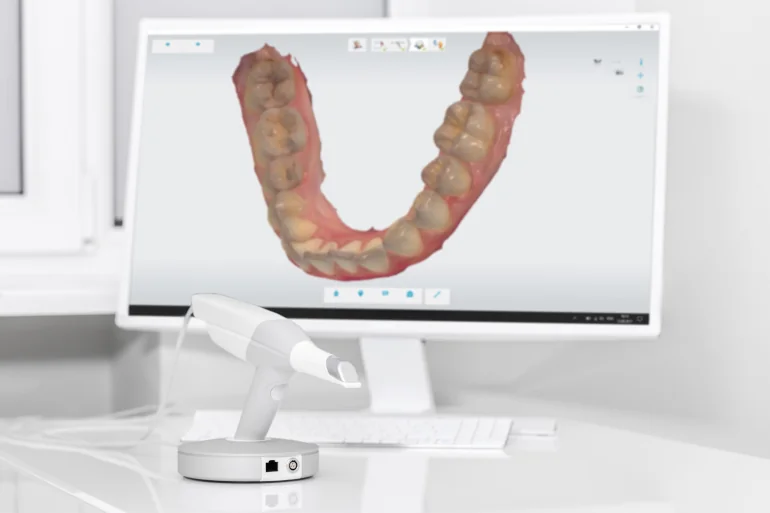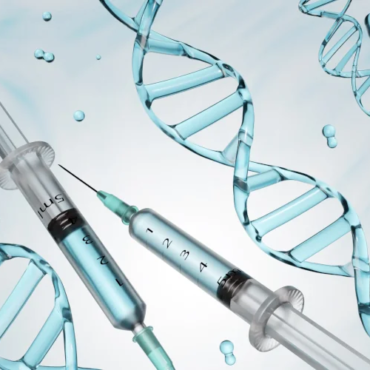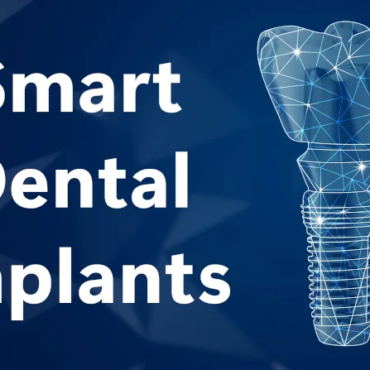In the ever-evolving landscape of dental technology, the era of messy molds and uncomfortable traditional impressions is giving way to the seamless precision of digital impressions. This transformative shift is made possible through the integration of intraoral scanners, offering a host of benefits in terms of comfort, accuracy, and efficacy, particularly in procedures involving crowns, bridges, and orthodontic treatments.
Comfortable Precision
Digital impressions redefine the patient’s experience through “Comfortable Precision,” offering more than just comfort. The minimally invasive approach replaces traditional molds, ensuring a gentler, patient-friendly experience.
Going beyond comfort, digital impressions provide unparalleled accuracy in capturing intricate oral details. This precision enhances diagnostics for effective treatment planning.
Efficiency is a hallmark of digital impressions, reducing chair time while maintaining precision in comprehensive oral assessments. Real-time visualizations empower patients to actively engage in their treatment, fostering informed decision-making and reducing anxiety.
- Traditional dental impressions often involved the use of cumbersome molds and materials, leading to discomfort for patients.
- Intraoral scanners have revolutionized this process, providing a more comfortable experience by eliminating the need for messy impression materials.
- Patients can now undergo procedures with greater ease as the scanner captures detailed impressions digitally, reducing both anxiety and discomfort.
Related Article: Biocompatible and Biomimetic Dentistry
Accuracy in Treatment
The transition to digital impressions signifies a remarkable leap in treatment precision, revolutionizing dental procedures. Unlike traditional methods prone to variability, digital impressions utilize state-of-the-art intraoral scanners that capture detailed 3D images with unparalleled accuracy.
Employing advanced optical technology like structured light or laser-based systems, these scanners create a micron-level precise digital replica of oral structures. This eliminates distortions associated with traditional molds, ensuring faithful reproduction of even the finest details crucial in procedures like crown placements and orthodontic interventions.
- The accuracy of digital impressions surpasses traditional methods, ensuring that the dental team receives precise data for treatment planning.
- In procedures such as crowns, bridges, and orthodontic treatments, where precision is paramount, digital impressions contribute to superior outcomes.
- Dentists can visualize the oral landscape with unparalleled clarity, allowing for meticulous planning and execution of treatment plans.
Streamlined Workflow
The integration of advanced scanning technology enables swift and precise image capture, significantly reducing chair time. These scanners employ rapid image stitching algorithms, ensuring seamless integration of captured data into a comprehensive digital model. The immediate availability of this digital dataset expedites the analysis and treatment planning phases.
Furthermore, the elimination of physical molds minimizes the potential for errors and enhances overall efficiency. Digital impressions facilitate a paperless workflow, where patient records and treatment plans seamlessly integrate into electronic dental management systems. This not only accelerates administrative tasks but also contributes to a more eco-friendly dental practice.
- Digital impressions streamline the overall workflow in dental practices, saving time for both dental professionals and patients.
- The elimination of physical molds reduces the potential for errors, ensuring that the captured data is instantly available for further analysis and treatment.
Related Article: All about Same Day Dental Crowns
Enhanced Patient Experience
Real-time visualizations represent a technical cornerstone in patient engagement. Intraoral scanners project detailed images onto screens, enabling patients to actively participate in their treatment journey. This transparency not only reduces anxiety but also fosters a collaborative approach between patients and dental professionals.
The personalized nature of digital impressions is another technical facet contributing to an elevated patient experience. Dental professionals can tailor the scanning process to individual sensitivities, ensuring a truly patient-centric approach. This customization not only enhances comfort but also establishes a foundation of trust and communication between the patient and the dental team.
- The adoption of intraoral scanners contributes to an enhanced overall patient experience, fostering a positive perception of dental visits.
- Patients appreciate the expedited, comfortable, and technologically advanced approach, motivating better compliance with recommended treatments.
Applications Across Dentistry
In restorative dentistry, digital impressions become indispensable for procedures like crown placements and bridges. The micron-level accuracy ensures precise fittings and optimal functional outcomes. Orthodontic treatments benefit from detailed 3D models, enabling practitioners to plan and execute precise interventions.
Implant planning becomes more sophisticated with the use of digital impressions, providing a comprehensive view of the patient’s oral anatomy. The accuracy of these scans aids in creating custom implant solutions, optimizing success rates. Digital impressions are also invaluable in the creation of dentures, where the meticulous reproduction of oral structures is crucial for comfort and functionality.
Related Article: Primeprint 3D Printing at Your Local Dentist
Versatility of Digital Impressions
The versatility of digital impressions extends to periodontics, where detailed scans aid in the assessment of gum health and treatment planning. From simple diagnostic procedures to complex surgical interventions, digital impressions are at the forefront, showcasing their technical prowess across various dental disciplines.
- While particularly advantageous for crowns, bridges, and orthodontic treatments, digital impressions find application across various dental procedures.
- From restorative dentistry to implant planning, the versatility of intraoral scanners elevates the standard of care across the dental spectrum.
As dental practices increasingly embrace digital impressions, the future promises a continued shift towards a more patient-centric, efficient, and technologically sophisticated approach to oral healthcare. The era of messy molds is giving way to a digital revolution that not only enhances precision in treatment but also redefines the overall dental experience.




